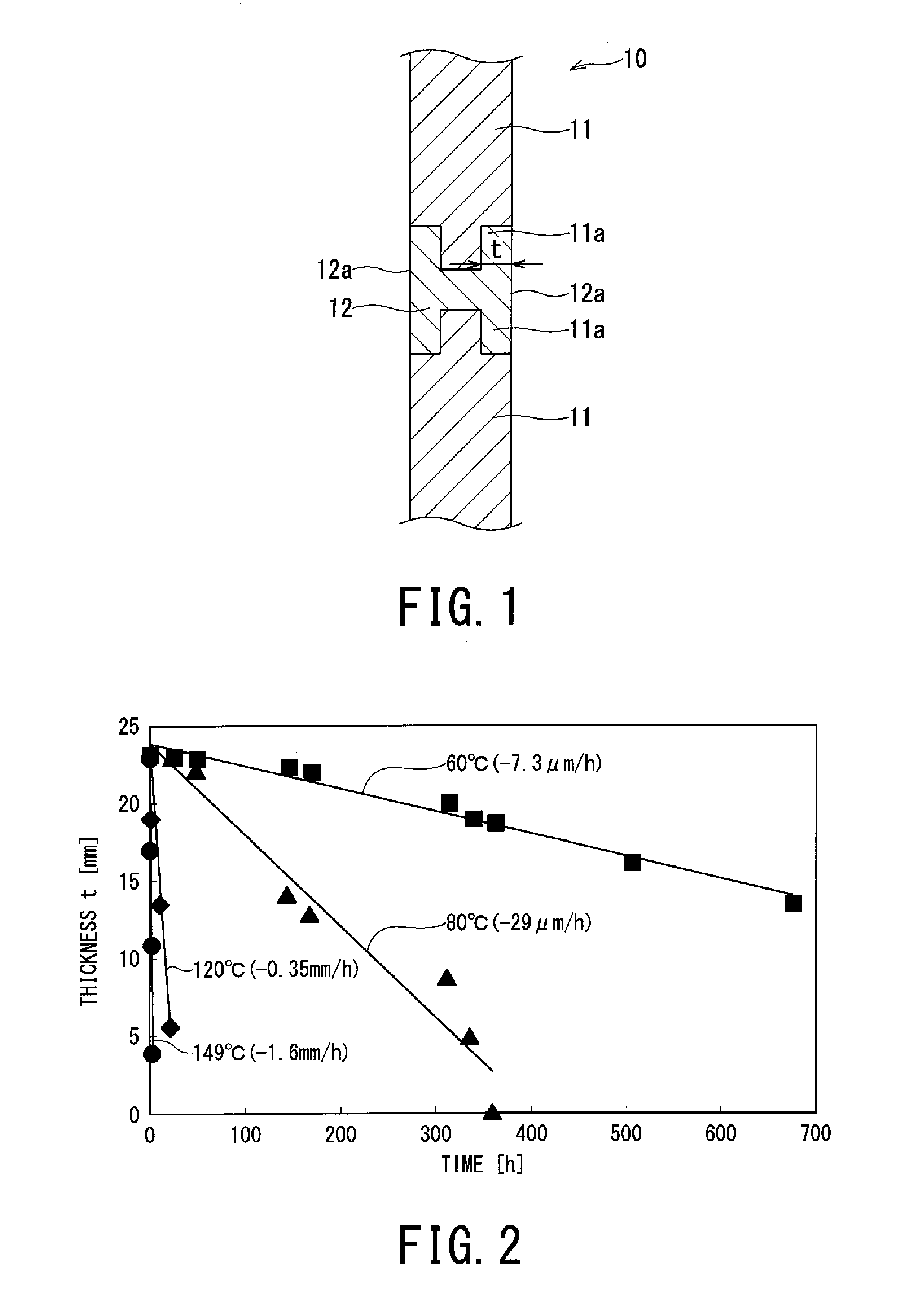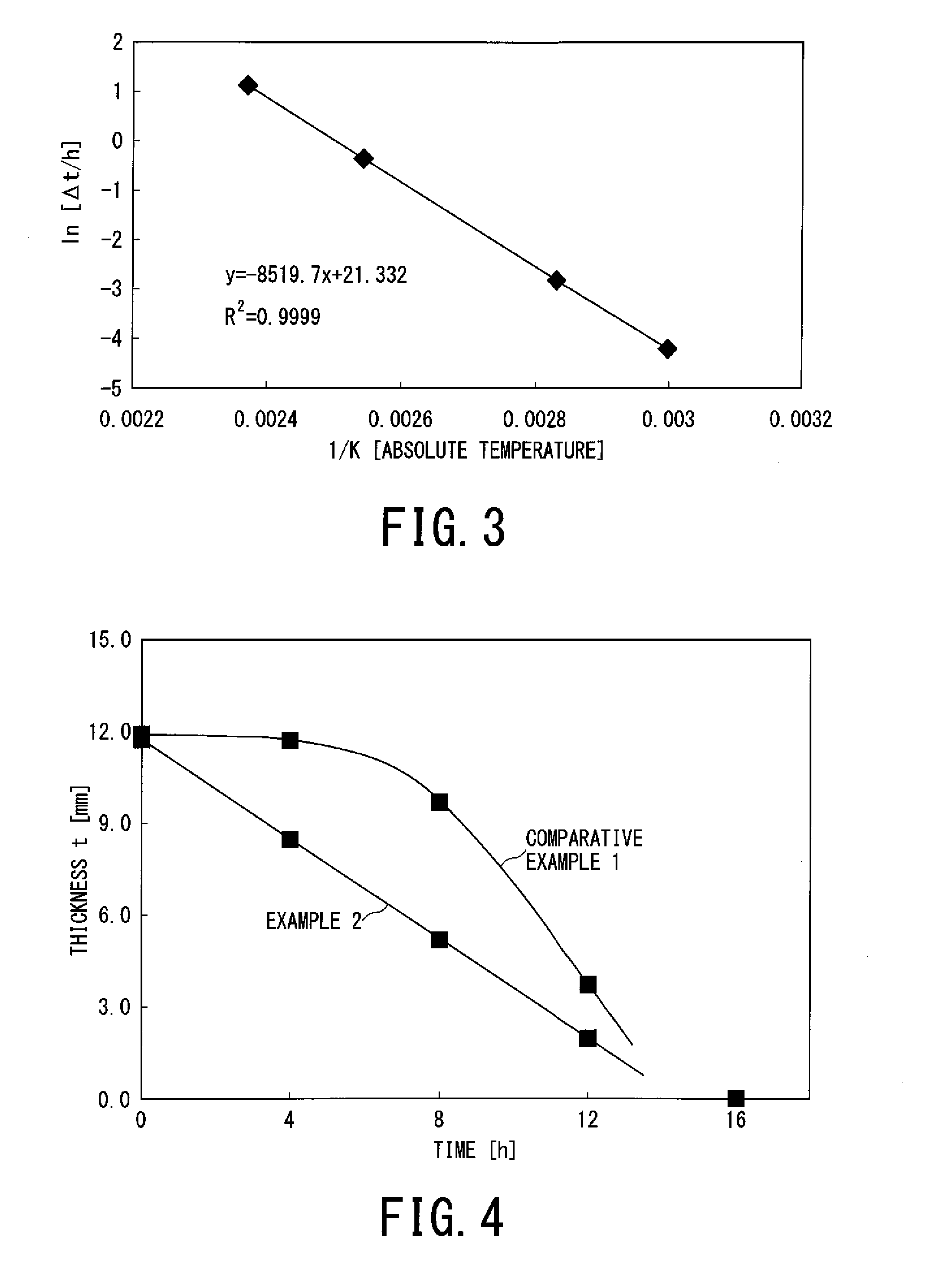Member for hydrocarbon resource collection downhole tool
a hydrocarbon resource and tool technology, applied in the direction of drilling pipes, wellbore/well accessories, sealing/packing, etc., can solve the problems of difficult accurate evaluation and unsatisfactory development of the use of degradable polymers, and achieve the effect of accurate design
- Summary
- Abstract
- Description
- Claims
- Application Information
AI Technical Summary
Benefits of technology
Problems solved by technology
Method used
Image
Examples
example 1
[0052]A predetermined number of 23 mm-thick molded pieces were prepared from glycolic acid homopolymer having initial molecular weight Mw=200,000 (PGA, made by Kureha Corporation) in the above-described manner, and were respectively subjected to the decomposition test in water at temperatures of 60, 80, 120 and 149 as described above to measure the change with time of reduced thicknesses (one side) (=□t). The results are plotted as shown in FIG. 2. In view of the plot in FIG. 2, a good linearity of thickness reduction rate is observed at each temperature. Based on the data of FIG. 2, an Arrhenius plot was obtained as shown in FIG. 3, wherein the ordinate represents a logarithmic value ln(□t / h) of the thickness change rate on one side, and the abscissa represents a reciprocal of absolute temperature (1 / K). From the results, the formula (2) mentioned above (and reproduced below) showing the temperature dependence of thickness reduction rate (one side) (=V) was obtained.
V=□t (mm) / h=exp...
example 2
[0053]Four pieces of 12 mm-thick molded pieces were prepared from the same PGA as used in Example 1 in the above-described manner, and subjected to the above-mentioned decomposition test in water, respectively, at 149 to measure the change with time of thickness reduction.
example 3
[0056]The in-water decomposition test was performed at 120 otherwise in the same manner as in Example 2.
PUM
 Login to View More
Login to View More Abstract
Description
Claims
Application Information
 Login to View More
Login to View More - R&D
- Intellectual Property
- Life Sciences
- Materials
- Tech Scout
- Unparalleled Data Quality
- Higher Quality Content
- 60% Fewer Hallucinations
Browse by: Latest US Patents, China's latest patents, Technical Efficacy Thesaurus, Application Domain, Technology Topic, Popular Technical Reports.
© 2025 PatSnap. All rights reserved.Legal|Privacy policy|Modern Slavery Act Transparency Statement|Sitemap|About US| Contact US: help@patsnap.com


